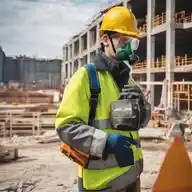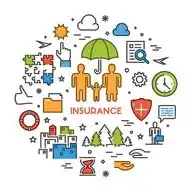
SafeWorkPlace With Noel
48 subscribers
About SafeWorkPlace With Noel
Dedicated to promoting safety and health in the workplace. Follow SafeworkPlace With Noel for valuable insights, tips, and updates.
Similar Channels
Swipe to see more
Posts

*Ear Protection* Types of Ear Protection 1. *Earplugs*: Disposable or reusable earplugs made of foam, silicone, or rubber that fit into the ear canal. 2. *Earmuffs*: Cups that cover the ears, often connected by a headband, which can be worn over the ears. 3. *Canal Caps*: Soft, flexible earplugs that fit into the ear canal. When to Use Ear Protection 1. *Loud Workplaces*: Construction sites, factories, or other workplaces with loud machinery or equipment. 2. *Concerts or Music Events*: Loud music can cause permanent hearing damage. 3. *Shooting or Hunting*: Gunshots can cause permanent hearing damage. 4. *Lawn Care or Power Tools*: Loud equipment like lawn mowers, chain saws, or power drills. 5. *Airports or Racing Events*: Loud engines or machinery. Benefits of Ear Protection 1. *Prevents Hearing Loss*: Reduces the risk of permanent hearing damage. 2. *Reduces Discomfort*: Protects against ear fatigue and discomfort. 3. *Improves Communication*: Helps to reduce background noise, improving communication. 4. *Enhances Concentration*: Reduces distractions caused by loud noises. How to Choose Ear Protection 1. *Noise Reduction Rating (NRR)*: Choose ear protection with a high NRR (up to 30 decibels). 2. *Comfort*: Select ear protection that is comfortable to wear for extended periods. 3. *Fit*: Ensure ear protection fits snugly and securely. 4. *Type*: Choose the type of ear protection suitable for your activity or workplace. Proper Use and Maintenance 1. *Follow Manufacturer Instructions*: Read and follow the manufacturer's instructions for use and maintenance. 2. *Clean and Store Properly*: Regularly clean and store ear protection to prevent damage and maintain effectiveness. 3. *Replace as Needed*: Replace ear protection if it becomes damaged or loses its effectiveness.

*Workplace Violence* Workplace violence refers to any physical assault, threatening behavior, or verbal abuse that occurs in the workplace. Types of Workplace Violence 1. *Physical violence*: Physical attacks, such as hitting, pushing, or kicking. 2. *Verbal abuse*: Threats, insults, or condescending language. 3. *Harassment*: Unwanted behavior, such as stalking or bullying. 4. *Intimidation*: Behavior that creates a fearful or hostile work environment. Causes of Workplace Violence 1. *Stress and frustration*: High-pressure work environments can lead to violence. 2. *Poor communication*: Lack of effective communication can lead to misunderstandings and conflict. 3. *Bullying and harassment*: Unaddressed bullying and harassment can escalate into violence. 4. *Mental health issues*: Untreated mental health issues can contribute to violent behavior. Prevention Strategies 1. *Develop a zero-tolerance policy*: Establish a clear policy that prohibits workplace violence. 2. *Provide training*: Offer training on conflict resolution, communication, and stress management. 3. *Encourage open communication*: Foster an open-door policy that encourages employees to report incidents or concerns. 4. *Conduct risk assessments*: Identify potential risks and take steps to mitigate them. 5. *Support employee well-being*: Provide resources and support for employees to manage stress and mental health. Response to Workplace Violence 1. *Call emergency services*: Immediately call the police or emergency services if a violent incident occurs. 2. *Provide support*: Offer support and counseling to affected employees. 3. *Conduct an investigation*: Investigate the incident to determine the cause and prevent future occurrences. 4. *Take disciplinary action*: Take disciplinary action against perpetrators, up to and including termination. Employee Responsibilities 1. *Report incidents*: Report any incidents or concerns to management or HR. 2. *Respect colleagues*: Treat colleagues with respect and dignity. 3. *Manage stress*: Take steps to manage stress and mental health. 4. *Participate in training*: Participate in training and education programs to prevent workplace violence.

*Safety Signage and Communication* As Safety ambassadors, let's emphasize the importance of proper safety signage and communication to inform employees. Key considerations include: - Displaying HSE policy and information - Proper signage for hazards and PPE usage - Regular inspections for signage condition and placement - Effective communication of safety information By maintaining a comprehensive safety signage and communication system, we promote a strong safety culture, ensure compliance, and identify hazards.

*Protecting Your Vision: Safety Tips to Prevent Eye Injuries* General Precautions 1. _Wear protective eyewear_: Use safety glasses, goggles, or face shields when working with power tools, chemicals, or in hazardous environments. 2. _Assess the risk_: Identify potential eye hazards in your workplace or daily activities. 3. _Keep chemicals away from eyes_: Handle chemicals carefully, and avoid mixing them near your face. Workplace Safety 1. _Use proper eye protection for tasks_: Wear specific eyewear designed for tasks like welding, cutting, or grinding. 2. _Keep work areas clean_: Regularly clean up debris and dust to prevent eye injuries. 3. _Follow safety protocols_: Adhere to established safety procedures and guidelines. Home and Daily Life 1. _Handle sharp objects carefully_: Be cautious when handling knives, scissors, or other sharp objects. 2. _Wear eye protection during sports_: Use protective eyewear when playing sports like basketball, tennis, or hockey. 3. _Avoid rubbing your eyes_: Refrain from rubbing your eyes, especially when working with chemicals or in dusty environments. First Aid for Eye Injuries 1. _Flush with water_: Immediately flush the eye with water for at least 15 minutes. 2. _Seek medical attention_: Consult a medical professional or go to the emergency room if the injury is severe. 3. _Avoid touching or rubbing_: Refrain from touching or rubbing the injured eye.














